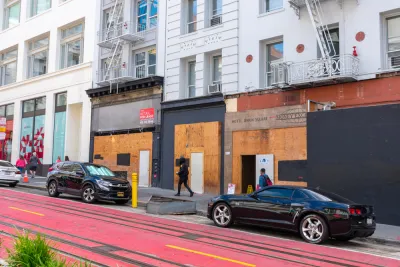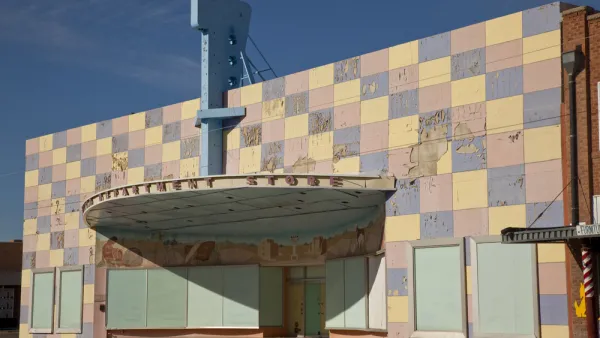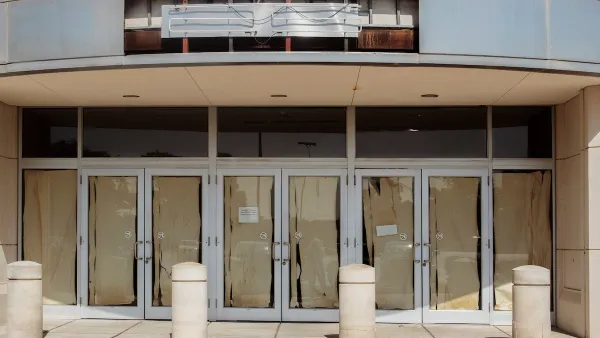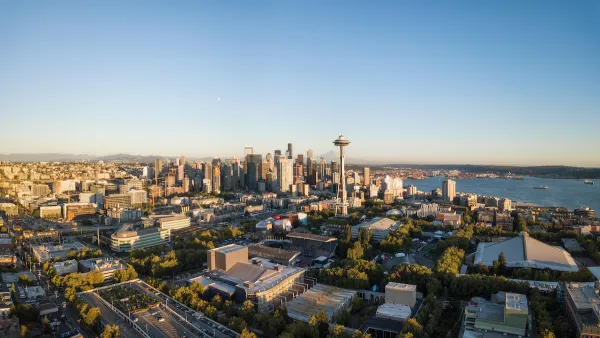As commercial storefronts experience high vacancy rates, cities like Oakland and San Francisco are making concerted efforts to support temporary tenants, public art installations, and small entrepreneurs that can revitalize abandoned spaces.

As stories from around the country attest, the last two and a half years accelerated a hollowing-out of central business districts in many U.S. cities. Regardless of how quickly the pandemic officially ends, writes John King in a paywalled article in the San Francisco Chronicle, “What cities and building owners must do now is find intriguing, inventive ways to plug holes on a short-term basis — so that today’s terrain of ‘for rent’ signs doesn’t become a permanent blight on too many urban blocks.”
King argues that “Cities need to find ways to prime the pump, and facilitate new types of ongoing activities within otherwise vacant ground floor spaces.” Kate Sofis, director of the San Francisco Office of Economic and Workforce Development, agrees. As King writes, “One promising initiative comes out of Sofis’ office: ‘Vacant to Vibrant,’ which would allocate $750,000 in the 2022-23 city budget to ‘pairing property owners with artists and small businesses who can use the space for short term activations.’”
King imagines even more possibilities: “Imagine if civic or cultural institutions committed to programming a year of exhibitions in a spacious storefront near Salesforce Tower, one after the other, each showcasing a niche within their collection.” Or “City Hall itself could commit to a storefront that would function as a service center — an easy spot for residents to get assistance face to face.”
“It also makes sense to loosen the definition of what is allowed along could-be-busy sidewalks,” King writes, pointing to the city of Oakland’s experiment in doing just that. Across the bay, “San Francisco’s proposed budget next year includes $2.5 million for special events and streetscape improvements in what the city calls the ‘economic core.’ The goal: to ‘draw a wide range of both business and leisure visitors over the course of a week.’ And give them a reason to stop by more than once.”
FULL STORY: Can pop-ups save downtown San Francisco? How Bay Area cities are trying to revive empty storefronts

National Parks Layoffs Will Cause Communities to Lose Billions
Thousands of essential park workers were laid off this week, just before the busy spring break season.

Retro-silient?: America’s First “Eco-burb,” The Woodlands Turns 50
A master-planned community north of Houston offers lessons on green infrastructure and resilient design, but falls short of its founder’s lofty affordability and walkability goals.

Delivering for America Plan Will Downgrade Mail Service in at Least 49.5 Percent of Zip Codes
Republican and Democrat lawmakers criticize the plan for its disproportionate negative impact on rural communities.

Test News Post 1
This is a summary

Test News Headline 46
Test for the image on the front page.

Balancing Bombs and Butterflies: How the National Guard Protects a Rare Species
The National Guard at Fort Indiantown Gap uses GIS technology and land management strategies to balance military training with conservation efforts, ensuring the survival of the rare eastern regal fritillary butterfly.
Urban Design for Planners 1: Software Tools
This six-course series explores essential urban design concepts using open source software and equips planners with the tools they need to participate fully in the urban design process.
Planning for Universal Design
Learn the tools for implementing Universal Design in planning regulations.
EMC Planning Group, Inc.
Planetizen
Planetizen
Mpact (formerly Rail~Volution)
Great Falls Development Authority, Inc.
HUDs Office of Policy Development and Research
NYU Wagner Graduate School of Public Service





























